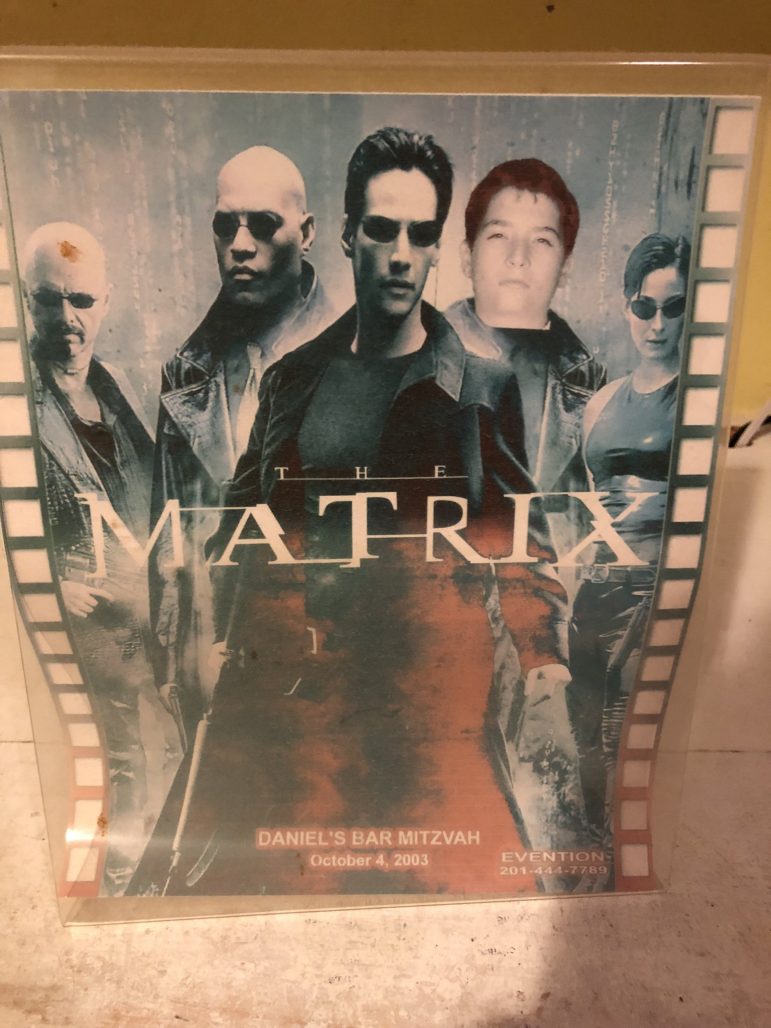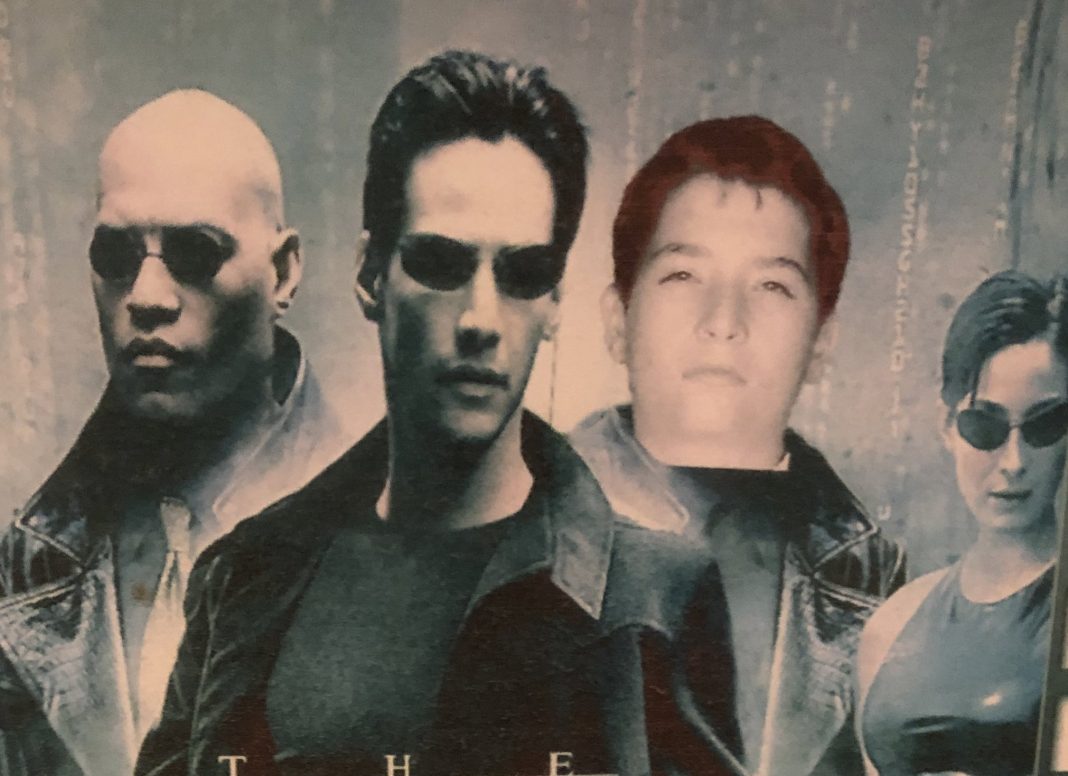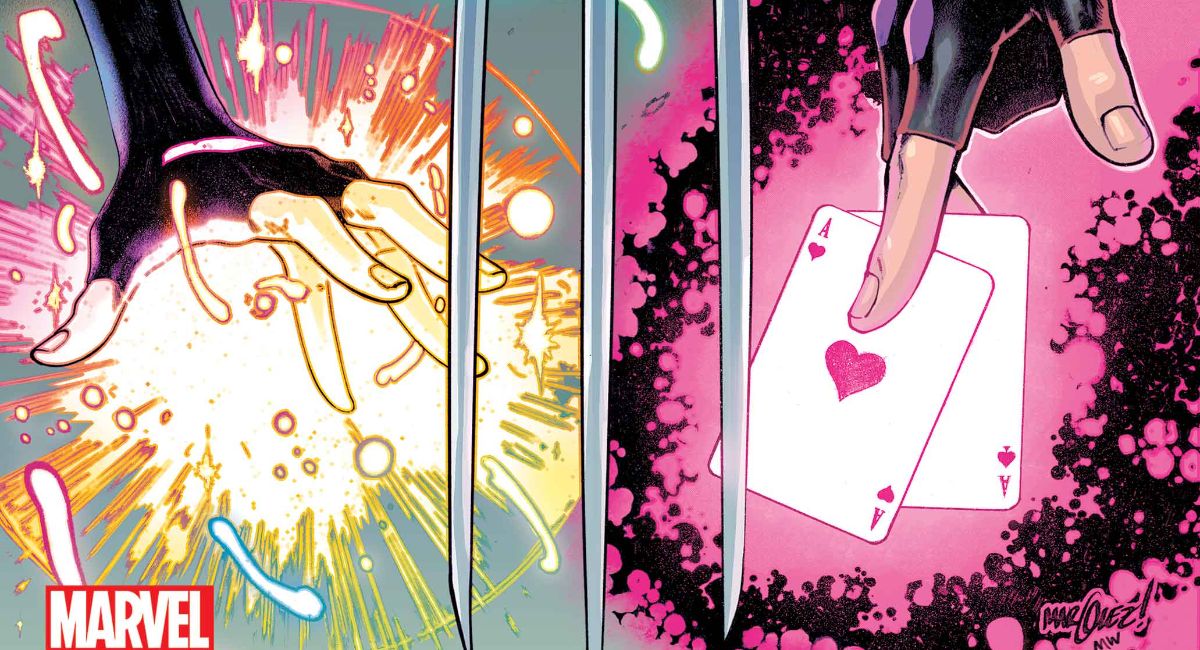The Beat’s Gregory Paul Silber has been accused of having a bit of an… obsessive personality. Each week in Silber Linings, he takes a humorous look at the weirdest, funniest, and most obscure bits of comics and pop culture that he can’t get out of his head.
I saw The Matrix Resurrections Wednesday night, the day it became available on HBO Max as part of their soon-to-be-discontinued practice of making theatrically-released films available to stream simultaneously on the platform. It took a few hours to convince myself to watch it, though. In the midst of a troubling spike in COVID cases throughout New York City where I live, as well as my current battle with what might be described as a mental health crisis, I was only partially joking when I told multiple friends that the promise of seeing a new Matrix movie without even needing to leave my apartment (I haven’t seen Spider-Man: No Way Home yet due to COVID concerns) was a major factor in keeping me going.
Besides, on a less severe note, Resurrections is the first Matrix film since 2003’s The Matrix Revolutions, and the last one for the foreseeable future, if not ever. Once I finished Resurrections, I’d be all out of Matrix. And there aren’t many entertainment franchises that mean more to me than The Matrix.
In the early-00s, it was impossible not to be at least somewhat familiar with Lilly and Lana Wachowski‘s original 1999 The Matrix through cultural osmosis. It was a certified cultural phenomenon. I was an elementary school student at the time, though, and not allowed to watch R-rated movies. But one day circa 2001, my family was visiting my aunt, and her boyfriend wanted to show-off his big-screen, high-definition TV and his impressive DVD collection. At the time, DVDs were still something of a novelty compared to VHS, and I had never even seen an HDTV before, so I was more than happy to oblige.
(He and my aunt have long since married, and that boyfriend is now an uncle. He’s a good guy, but as a pre-teen boy, a sick home entertainment setup and a killer DVD collection seemed like more than enough reason to marry).
We didn’t sit down and watch the whole movie. He just skipped around to a few key action scenes, using the DVD chapter selection feature that was also a novelty for the time. Instantly, I fell in love. To this day, I don’t think I’ve ever seen a film with action scenes that balance visceral violence, special effects spectacle, and thrilling stunt work as effectively as The Matrix.
It wasn’t long after that that I managed to convince my parents to let me rent The Matrix from our local Blockbuster so I could watch it in its entirety (it may have helped that my future uncle assured them during our visit that while The Matrix had plenty of violence and profanity, there was “definitely no sexual content or nudity”). I quickly discovered that it was far more than just a great collection of action set pieces. At the tender age of – I think I was 11? – I was learning about existentialism, anti-authoritarianism, anti-capitalism, trans-humanism, and all kinds of other philosophical ideas I didn’t have the vocabulary to understand yet. The fact that I could barely follow along with everything the Wachowski Sisters were throwing and my little head only made the whole affair more exciting. To this day, it’s one of my favorite movies.

By 2003, when I was 12, The Wachowskis released the one-two punch of The Matrix Reloaded and The Matrix Revolutions. While I had to see The Matrix Reloaded on DVD, The Matrix Revolutions was the first R-rated movie I saw in theaters, in IMAX no less. As both sequels were generally considered disappointments in comparison to the instant-classic original, I had long chalked up my sustained appreciation for them to the age in which I saw them. It was impossible for me not to love movies where a superhero in sunglasses fought a hundred evil clones (Hugo Weaving) in slow-motion, his hot leather-clad girlfriend (Carrie-Ann Moss) did motorcycle stunts, and rebel soldiers in mech suits blast robot bugs with a seemingly endless barrage of machine gun fire.
More recently, The 2003 Matrix sequels have enjoyed something of a critical reassessment (which may have been spurred, at least in part, by star Keanu Reeves‘ career renaissance since 2014’s John Wick), and in rewatching the trilogy this year in preparation for Resurrections, I was pleased to confirm that 12-year-old Greg was right all along. While few would argue any of the sequels are better than the 1999 original (although I know my friend Avery Kaplan, who co-hosts the Matrix 404 podcast with fellow Comics Beat editor Therese Lacson, prefers Reloaded), they remain wildly ambitious, if unwieldy, triumphs of uncompromising vision.
In watching Resurrections, I realized how important that “uncompromising” quality was to the franchise’s enduring appeal. I’ll be the first to admit that as much as I enjoyed it, it’s far from perfect. Much like the previous sequels (and the original film, to a lesser degree), the reliance on exposition threatens to slow the pacing to a crawl at times, especially in the second act. Some may find this fourth film’s greatest sin to be its uncharacteristically clunky fight scenes, with weirdly inert fight choreography and a curious lack of flourish compared to the previous films. With Lilly opting out of this installment as big sister Lana directed it herself (as well as writing the screenplay alongside David Mitchell and Aleksandar Hemon), one can’t help but wonder what she could have brought to the table. It’s essentially impossible to tell who contributed what to their previous collaborations, but these are the questions you ask yourself when the action scenes somehow become a low point in the latest installment of one of the greatest action series in film history.

(I should also acknowledge that as something of a deliberate anti-blockbuster and meta-commentary on the blockbuster industrial complex, the choice to de-emphasize action was obviously intentional. That’s fine, but the way I see it is, if you’re going to do action at all, why not do it right?)
Still, my enjoyment of Resurrections was saved by the fact that at no point did I feel like Lana was making concessions for the studios, her fans, or anyone else. While I was disappointed by how much the film struggles to keep up the momentum of its brilliant first act, I can’t get over how brazen it is as a statement of intent. I won’t spoil anything this early in the film’s release cycle, so I’ll just say it’s so meta that I yelled “WHAT” multiple times, and leave it at that for now.
In an age of parasocial relationships run amok in geek communities, and toxic fandom dictating geek culture to a troubling degree, The Matrix feels like an anomaly: a billion-dollar franchise shepherded by idiosyncratic auteurs who don’t seem to particularly care whether you understand their films, or even necessarily like them. I love Star Wars, but let’s compare The Matrix sequels to something like The Rise of Skywalker: a film so transparently preoccupied with the worst, loudest voices in its colossal fandom that it torpedoed its chance to satisfyingly wrap up a 9-film saga so that the cyptofascist Youtubers who created a cottage industry based around yelling that women were ruining Star Wars wouldn’t make unfavorable comparisons to the divisive-but-great The Last Jedi.
Meanwhile, The Matrix series is led by two trans women telling a story that demands viewers to question everything from their own fandom, to the nature of reality, and for some viewers, even their gender. Even after I learned that The Wachowskis had transitioned and would go by different names than the ones I saw on my DVD case for The Matrix as a kid, it never occurred to me, a cis guy, that there was anything trans about The Matrix until I read about it from trans people, and Lilly Wachowksi confirmed herself. The Matrix is so dense with ideas that it can be something of a Rorschach test, with multiple people from multiple backgrounds coming away with vastly different readings. There’s not necessarily a right answer, but The Wachowskis aren’t afraid to say what the wrong answers are in the text… and at least once in the real world.
Fuck both of you
— Lilly Wachowski (@lilly_wachowski) May 17, 2020
For all their big ideas, even the sillier parts of The Matrix films are unmistakably Wachowski. You can watch it in a philosophy class, as I did as a high school sophomore, and have a great discussion about how it relates to Plato‘s “The Allegory of the Cave.” Or you can kick back and enjoy a fun movie about sexy nerds in cool outfits dancing to techno, making out, and kicking robots in the face. I truly believe the Wachowskis are geniuses (here’s the obligatory part where I say I don’t use that word lightly), and there’s no reason why geniuses can’t love anime, video games, kung fu movies, comic books, and Rage Against the Machine.









